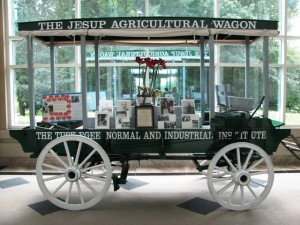- “All green chile derives its genetic base from the work of Fabian Garcia. We are at the center of the universe when it comes to chile because of Dr. Garcia.”
- Indian farmers move out of sugarcane, live to regret it.
- Freakonomists get Svalbard governance slightly wrong, but what the heck. Get it from the horse’s mouth.
- Adapting to climate change in Cuba through crop improvement.
- The Argentinian gauchos are running scared. And not just because of their pathetic football team.
- Microscopic remains of 30,000 year old flax cords found in Georgian cave. 30,000?
- Gotta fish less, boffins say.
- Growing shittake in a disused Mittagong railway tunnel.
- You remember our recent Dung of the Devil post? You remember how you thought it was a plant you didn’t need to know much about? Think again.
- BBC’s The Food Programme tackles African indigenous veggies.
Marina of the Zabballeen does the rounds
We’ve blogged a few times about the plight of the Zabballeen — Cairo’s Coptic garbage collectors and pig-keepers — in the wake of the pig cull which was the Egyptian governments main response to swine flu. Now, via Treehugger, comes news of a movie about this embattled community: Marina of the Zabballeen. It seems to have done quite well on the festival circuit. If you caught it, let us know.
Indigenous food systems documented
FAO has a book out called Indigenous Peoples’ Food Systems, published with the Centre for Indigenous Peoples’ Nutrition and Environment (CINE). There’s an informative interview with Barbara Burlingame, senior nutrition officer at FAO and coordinator for the book, on the FAO InTouch website. Unfortunately, this is only available internally at FAO, for reasons which elude me. Here’s a few of the interesting things Dr Burlingame had to say.
We wanted to showcase the many dimensions of these traditional food resources, breaking them down by nutrition, health, culture and environmental sustainability. So much knowledge of early cultures is contained within traditional foods and their cultivation, and they have a direct impact on the physical, emotional, mental and spiritual health of indigenous communities. Indigenous foods can have important nutritional benefits, for example. For instance plant foods are generally viewed as good sources of carbohydrates, vitamins and minerals. These foods also provide important economic benefits, such as helping create self-sufficient communities and establishing a strong foundation of food security.
…
We believe the information can be a help to those in nutrition, agriculture, environmental and health education, and science, including policymakers. Nutritionists can use the information to try and correct imbalances in certain regions. For example, we discovered in research that the Pohnpei district community in the Federated States of Micronesia was severely deficient in vitamin A, despite the fact that a species of banana rich in vitamin A beta-carotenes was indigenous to the region. Once we determined the nutritional composition of the banana, we were able to educate the people about its benefit and encourage them to eat the local fruit, which helped reverse the deficiency.
…
Yes, another book is under way that focuses more on nutrition and public health. It will look at policy dimensions, stemming the tide of obesity in indigenous peoples, the value of indigenous weaning foods for babies, and a ‘go local’ campaign in Micronesia encouraging communities to eat local food items. We will also continue in our efforts in integrating elements of biodiversity into all aspects of nutrition.
“Go Local” of course refers to the campaign to promote traditional foods in the Pacific spearheaded by Lois Englberger and her colleagues at the Island Food Community of Pohnpei, who have appeared frequently on these pages. It’s great to see my old friends from the Pacific getting this kind of international exposure for their efforts, and making a difference beyond their immediate region.
Around the Carver Center
I’ve just got back from my second trip to the US in three weeks. 1 After Ames, Iowa a couple of weeks ago, last week was the turn of Beltsville, Maryland. Again we were hosted by USDA-ARS, this time at the George Washington Carver Center, so again many thanks to our friends there for the hospitality.
A legendary African-American post-bellum agriculturalist, breeder, botanist and educator, Carver in fact provides a further connection between the two places, as he was a student and then a faculty member at Iowa State University. On gaining his masters degree in 1896, Carver was invited by Booker T. Washington to take charge of the Agriculture Department at the five-year-old Tuskegee Normal and Industrial Institute, later Tuskegee University in Alabama, which he was adamant would “unlock the golden dawn of freedom to our people.” A gifted educator, he took his teaching on the road, by way of the mule-drawn Jesup Agricultural Wagon, built by the students and named after New York financier Morris K. Jesup, who provided the funds for it. Later replaced by a motorized vehicle, the original can be seen in the lobby of the Carver Center.

Another interesting exhibit in the Carver Center is the ARS Science Hall of Fame. This has been honouring ARS scientists for their achievements since 1986. Alas, although a number of breeders have made it, nobody involved primarily in the conservation side of genetic resources science has been elected. Yet.
Nibbles: Wild cassava, Oilseed rape breeding, Byelorussian food
- Wild cassava relatives could be used for nutritional enhancement.
- “…quality improvement did not significantly reduce the genetic diversity of European and Chinese Brassica rapa cultivars.”
- Byelorussian agrobiodiversity bazaar.